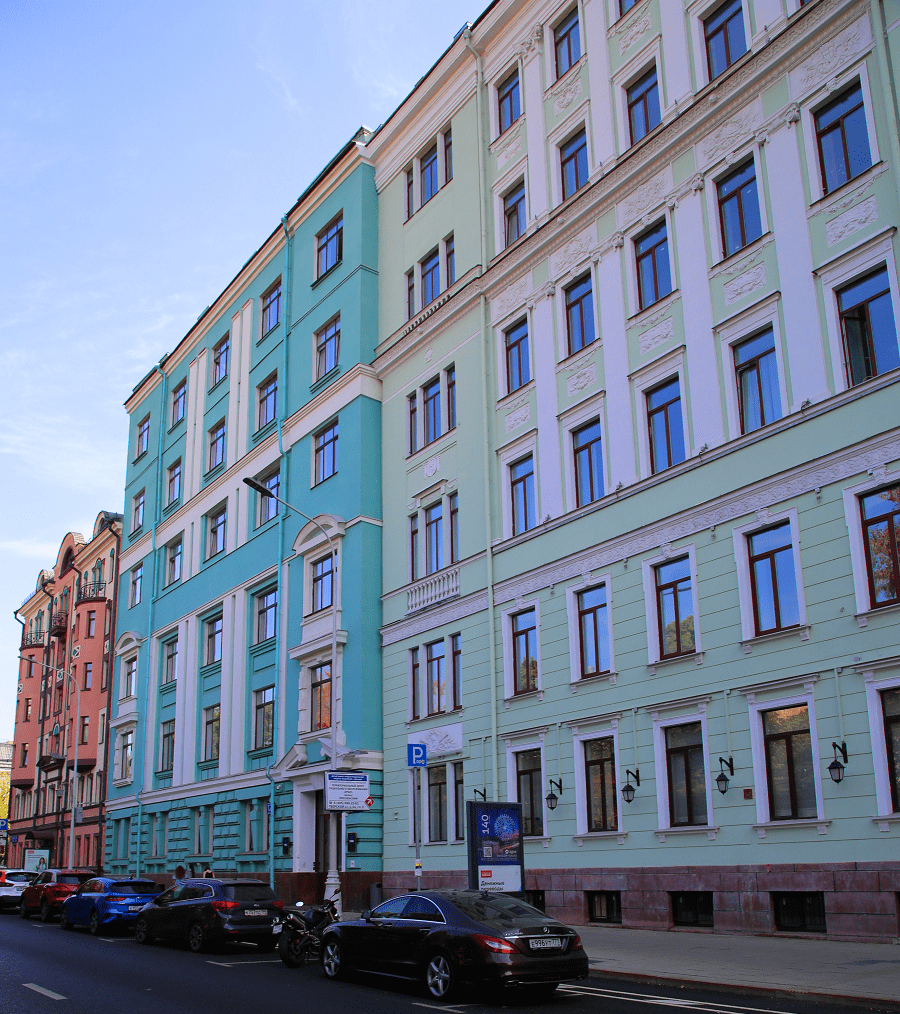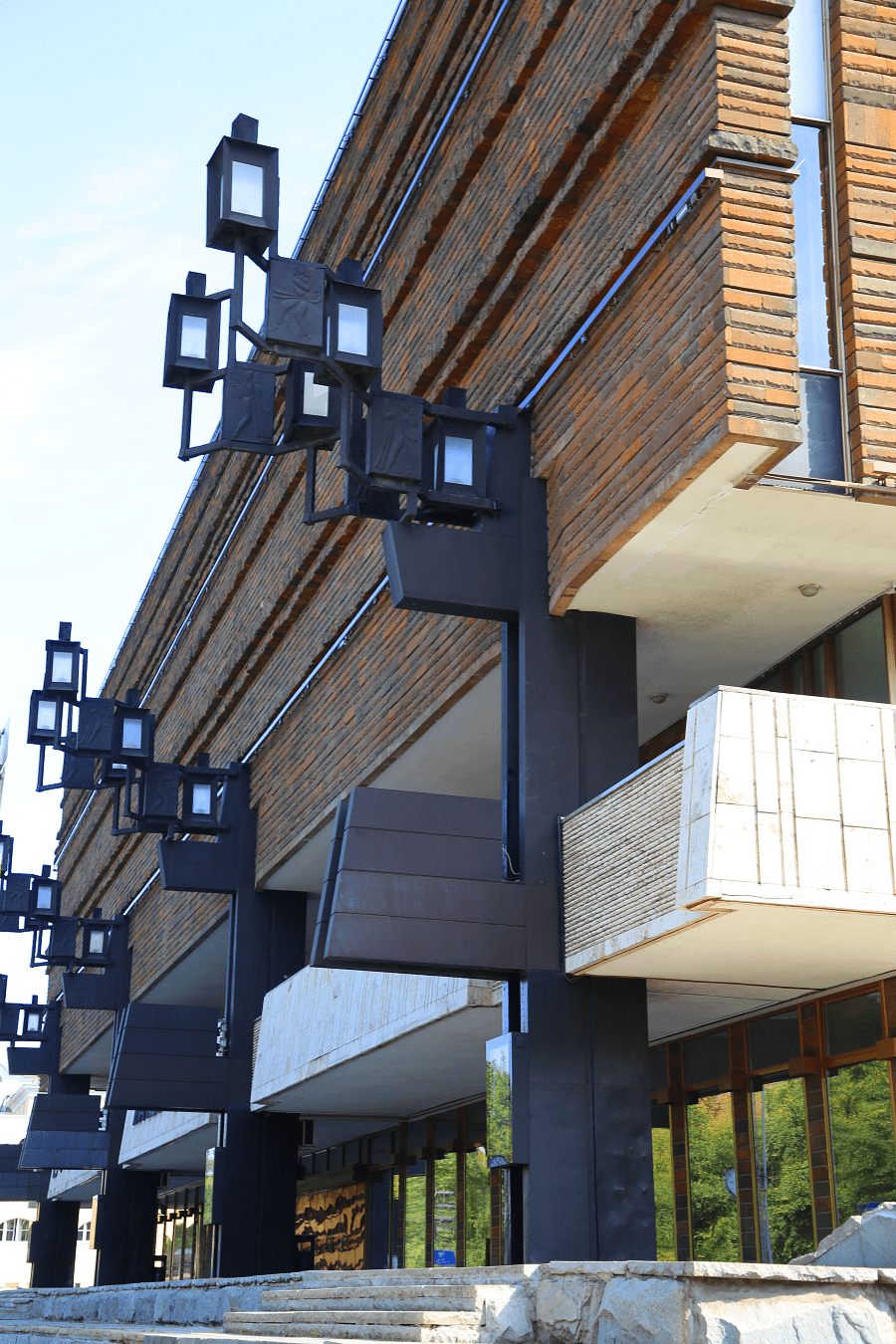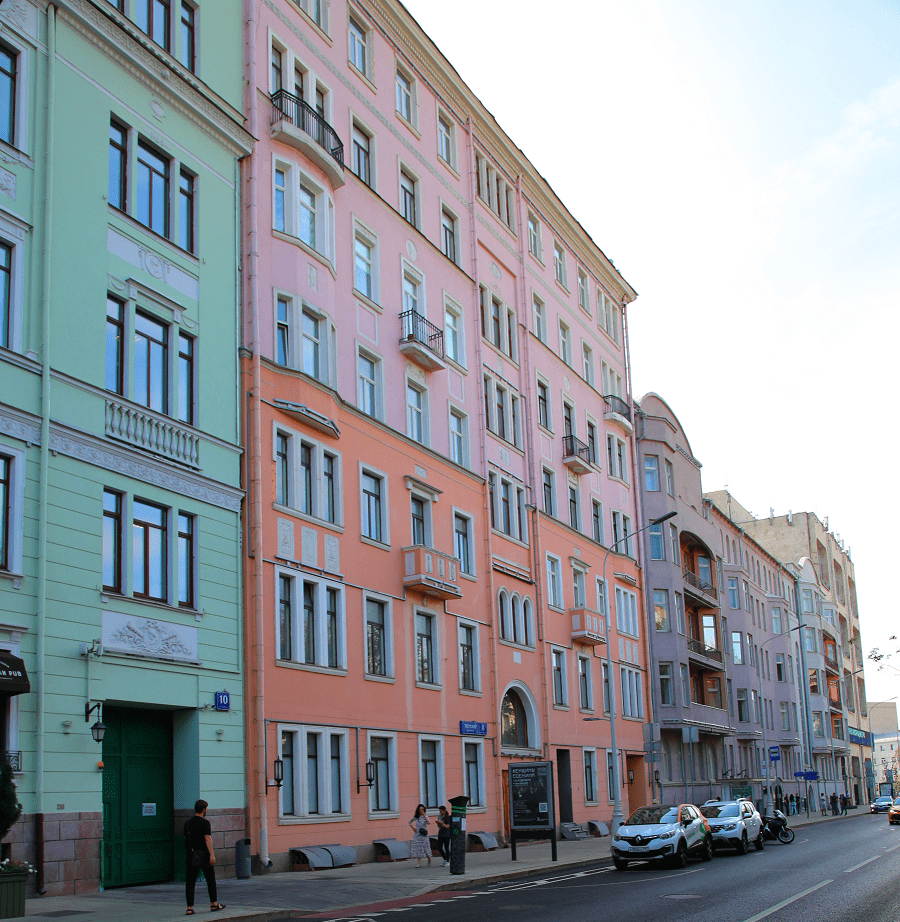Tverskoy Boulevard is a boulevard in the Central Administrative District of Moscow, the oldest and longest on the Boulevard Ring. Passes from Nikitsky Gate Square to Pushkinskaya Square.
On the left, Malaya Bronnaya Street, Bogoslovsky, and Sytinsky lanes adjoin the boulevard, and on the right – the Swedish dead end. The numbering of houses is conducted from the Nikitsky Gate Square.
Notable buildings
On the odd side
No. 1 – A six-story house with a two-story mezzanine was built in 1949 for military personnel, according to the project of architects K. D. Kislova and N. N. Selivanov.
No. 3 – Residential building. Previously, this place was a profitable house built in 1877 by the architect P. S. Campioni. Soviet commander D.S. Sukhorukov lived here.
No. 7/2 is an apartment building of the Society for Assistance to Needy Students of the Imperial Moscow University (1882, architects V. P. Zagorsky, N. D. Strukov, I. I. Pozdeev), an object of cultural heritage of regional significance.
No. 9 – Profitable house of I. M. Korovin (1906, architect I. G. Kondratenko), a declared object of cultural heritage.
No. 11 – House-museum of M. N. Ermolova. The actress lived here from 1889 until she died in 1928. The building is an object of cultural heritage of federal significance.
No. 13, p. 1 – (since 2012) The central office of the political party “Civil Platform.”
No. 17, pp. 1, 2, 7 – Profitable house with outbuildings (1879, architect S. S. Eybushits).
No. 17, p. 4 – The main house of the city estate of Plakhovo, Ostashevsky, L. S. Polyakov (end of the 17th century, the 1760s, 19th century).
No. 19 – Profitable House (1870s, architect A. A. Martynov). An outstanding Russian surgeon N. V. Sklifosovsky lived in this house since the late 1880s, and later a Soviet military leader, Vice Admiral G. N. Kholostyakov.
No. 23/16 – The Chamber Theater of A. Ya. Tairov opened in 1914 (since 1950 – the Moscow Drama Theater was named after A. S. Pushkin).
No. 25 – “Herzen’s House,” an object of cultural heritage of federal significance.
No. 27/1/20 – Manor gr. Anna Sergeevna Saltykova, XVIII-XIX centuries – an object of cultural heritage of federal significance, the House appears in the “Architectural Albums” by M. F. Kazakov.
On the even side
No. 2-4/28 – Administrative building of TASS (1970-1977, architects V. S. Egerev, A. A. Sheikhet, Z. F. Abramova, G. L. Sirota; engineers B. S. Gurvich, Yu. S. Manevich, A. Ya. Koganov).
No. 6 – The house of the St. Petersburg Insurance Society (Korobkova) (1902, architects A. U. Zelenko and A. F. Meisner).
No. 8 is the profitable house of V. F. Gefe (1910, architect N. G. Lazarev).
No. 10 is the profitable house of N. P. Lamanova (1908, architect N. G. Lazarev).
No. 12 – Hostel of the People’s Commissariat of Finance (Completed in 1920-1927 by architect I. A. Ivanov-Shitz). The actor V. L. Zuskin lived in the house.
No. 12, building 1 – The board of the Nizhny Novgorod-Samara Land Bank – the administrative building of TASS (1889, architect K. M. Bykovsky; 1909, architect I. I. Rerberg; 1929; 1938, architects N. Vishnevsky, V. Vorobyov), a valuable city-forming object.
No. 14, p. 1 – TASS administrative building (1997-1998, architect D. M. Deev).
No. 14, p. 5 – An outbuilding of the city estate (1810, 1886, architect V. I. Myasnikov).
No. 16, p. 5 – Residential house (the 1990s, architect M. M. Posokhin).
No. 18, building 1 – the estate of O. I. Garchikova – the Mansion of P. P. Smirnov (1834 – the main house with outbuildings; 1871 – annexing outbuildings to the house; 1901 – restructuring, changing the facade, architect F. O. Shekhtel, with the participation of A. A. Galetsky).
No. 18, p. 2 (in the courtyard) – an outbuilding in the estate of P. P. Smirnov (1876, architect A. E. Weber; 1912-1914 – restructuring for the placement of a cinematograph (cinema), engineer N. D. Polikarpov; 1941; 1990s), a valuable city-forming object.
No. 20, p. 4 – the residential house of the RZhSK of educational workers “The First Step” (1928-1931, engineer N. S. Zhukov; 1941), a valuable city-forming object.
No. 22 – the new building of the Moscow Art Theater (1972-1973, architects V. S. Kubasov, A. Morgulis, V. S. Ulyashova, engineers A. P. Tsikunov, Yu. S. Manevich, acoustic engineer A. Kacherovich, the authors of the lamps are sculptors A. V. Vasnetsov, Yu. Turgenev).
No. 24 – a residential building (beginning of the 19th century, architect O. Bove), a declared object of cultural heritage.
No. 26 – this place was the northern part of the city estate of one of the favorites of Empress Catherine II, I. N. Rimsky-Korsakov, built in the middle of the 18th century.
No. 26a – Cafe Pushkin.
No. 28/17 – residential building (1939-1941, architect A. G. Mordvinov), a valuable city-forming object.
Pushkin oak
On Tverskoy Boulevard, near the earthen rampart of the White City, the “Pushkin Oak” grows. The tree is over 200 years old. It is a promising natural monument of regional importance.
Transport
At the end of the boulevard there are metro stations Tverskaya, Pushkinskaya and Chekhovskaya. Buses A, 15 follow the boulevard.














